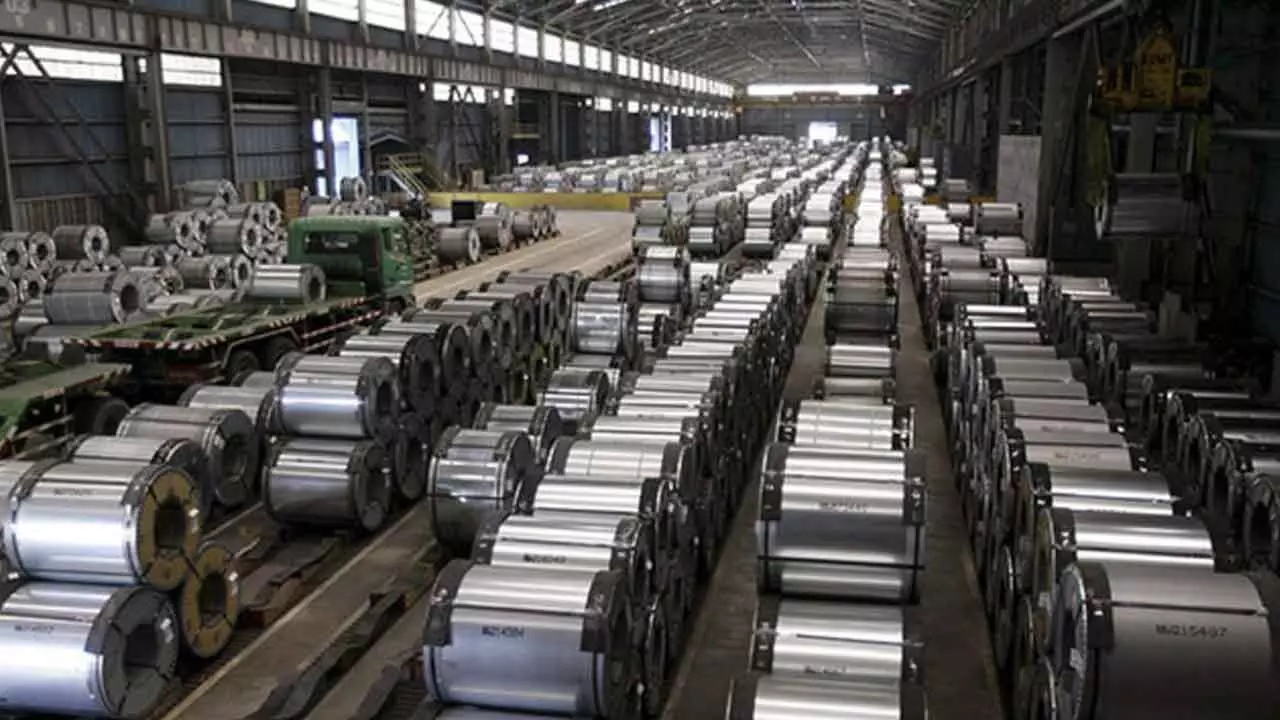Predatory import of steel worries domestic producers
Steel industry urges govt to impose strong tariffs to curb cheap imports
Predatory import of steel worries domestic producers

Already Q1 crude steel production growth has slowed down to 4.6% compared to 8.4% CPLY. The government has to seriously consider putting strong tariff measures rather than non-tariff one - DK Mohanty, Ex-Director (Commercial), RINL, tells Bizz Buzz
Twin Threats:
♦ Industry demands policy push for Capex investments amid slowing growth
♦ SIMS 2.0 deemed insufficient to curb steel imports, stronger tariffs sought
♦ FTAs and CEPAs blamed for flooding Indian market with cheap steel
♦ Domestic steelmakers facing losses due to import surge and slowing demand
Visakhapatnam: Despite positive growth projections for the Indian steel industry, which has performed impressively in recent years, the threat posed by surging and predatory imports is worrying many stakeholders. They want impediments removed to reduce the demand for cheap steel from China and other countries.
Despite some of the problems faced by them, all the major steel manufacturers including SAIL, Tata Steel, JSW Steel, JSPL and ArcelorMittal Nippon Steel India are gearing up for massive expansion. India has already emerged as the second largest steel producer after China, which is racing ahead of all others. After China and India, other major producers are Japan, United States, Russia, South Korea, Turkey and Germany. India’s crude steel production was 145 million tonnes in 2023-24 as against 127 million tonnes in the previous year.
Low per capita consumption, high capital and labour intensive cost, disruption in raw material supply, outdated technology are the major impediments dampening the spirit of domestic producers. They expect a policy push to those who invest in Capex.
In an exclusive interview, DK Mohanty, who retired as Director (Commercial) of Rashtriya Ispat Nigam Limited (RINL), told Bizz Buzz that already Q-1 crude steel production growth has slowed down to 4.6 per cent compared to 8.4 per cent CPLY.
He said the government has to seriously consider putting strong tariff measures rather than non-tariff one like launching Steel Import Monitoring System (SIMS) 2.0 by the Directorate General of Foreign Trade (DGFT).
Official sources said the present market size in India is estimated at 135.81 million tonnes and as per market trends, it is poised to reach 209.93 million tonnes by 2029 with a CAGR of 9.18 percent. Robust GDP growth notwithstanding the long spell of pandemic’s fallout, may raise domestic steel production to at least 300 million tonnes by 2030. The mandarins in the Ministry of Steel say the demand has grown by 13 to 14 per cent year-on-year in FY24. It is projected to grow further due to increased focus on infrastructure, housing, road and rail connectivity and port-led development, industrial corridors and reduction in freight cost under PM’s Gatishakti Mission.
Asked to comment on the launching of SIMS 2.0 by DGFT, Mohanty, who served as Zonal Chairman of Confederation of Indian Industry (CII) said, “It’s nothing but a modified version of SIMS which is already in place for helping the Customs authorities. But the main issue today is the bulk of imports coming in due to global sluggish market conditions and Chinese demand vs supply position in their domestic market by adopting predatory pricing. So even after applicable duty, the landing prices of HRC are much cheaper than domestic prices.”
He hastened to add “furthermore, FTA (Free Trade Agreements) and CEPA (Comprehensive Economic Partnership Agreement) countries are pushing their bulk production to the only country with some genuine demand. But in such a scenario, when so much of Capex which is already put in and in pipeline by domestic manufacturers will land up in huge losses. Already Q-1 FY25 results are indicative of this fact even though there is softening of coking coal prices.”

